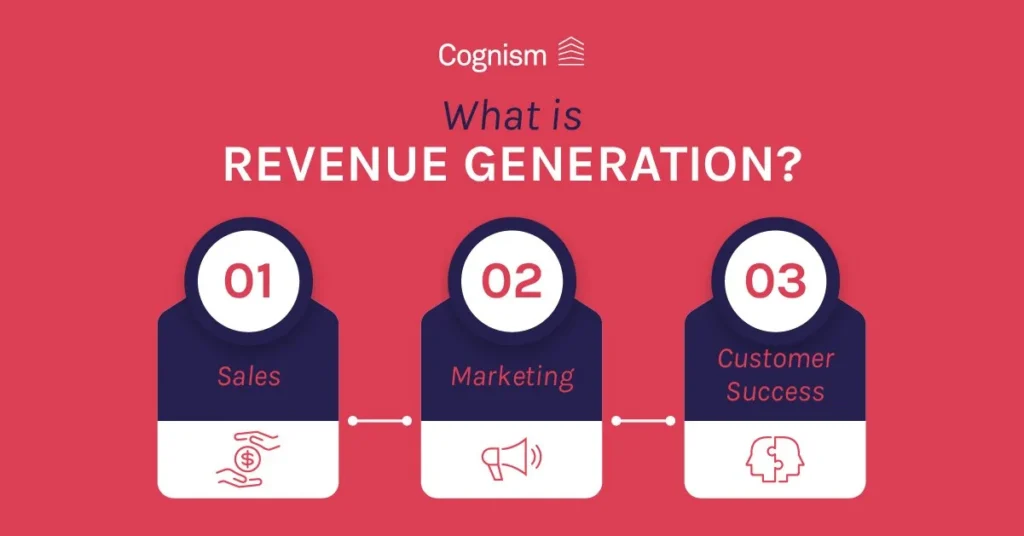Are Your Revenue Creation Efforts Working for You?
In business, the goal is typically to generate leads and secure new customers. After all, that’s what’s required if you want to increase profits. However, you also want to know where to direct your time and attention to attract those leads and sales to your business. That’s why it’s so important to know whether your revenue creation efforts are working for you so you can allot resources to the right tasks.
Learn what revenue creation entails, as well as a few simple ways you can measure the profitability of your current business strategy.
Key Takeaways:
- Revenue creation consists of any revenue-generating tasks your business is completing.
- Performance reviews can help you assess progress when working toward hitting revenue targets.
- Always track the proper metrics, such as conversion rates and the number of leads generated, so you can ensure you’re on track to hit your profitability goals.
What Does Revenue Creation Mean?
Revenue creation is defined as any activity your business does with the intention of it helping to generate revenue. Part of this process is developing new products and services to offer to your target audience, as that’s what will directly bring revenue to your business.
However, content creation and social media marketing are also revenue-generating tasks, as they’re attracting leads to your business and helping establish your brand’s know, like, and trust (KLT) factor.

Elements that Create Revenue in a Company
Here are the key elements for revenue creation:
Effective Marketing
You need a strong marketing plan that encourages consistent posting, offers valuable content, and puts you front and center on the platforms where your target audience can discover you and engage with you. However, it’s not just about marketing the business but also your paid offerings.
Sales Funnels
A proper sales funnel outlines the journey someone takes as they move from being a lead to a paying customer. You want to have a funnel in place that moves potential buyers along this journey to increase your conversion rates. Then, you can automate processes to help move them along the funnel, thereby allowing you to focus on other business tasks simultaneously.
Customer Retention
The best way to generate steady profits for your business is to keep your existing customers coming back for more. Prioritize nurturing relationships with your customers so they’ll want to purchase from you again in the future.

Although sales, marketing, and customer success are crucial for any business’s revenue creation, these processes will look different for everyone. For instance, consider what will appeal to your target audience. What do they want to see from you that will help them develop a strong connection with your company? What will leave them wanting to buy a product or service from you?
How to Determine if Your Revenue Creation Efforts Are Working
You don’t want to pour tons of resources into revenue-creation tasks that aren’t producing a return on your investment. Instead, focus on the things that are boosting your company’s income and increasing profitability.
But how do you know what’s worth your time? Here are a few tips to determine if your hard work is paying off and generating the profits you want:
1. Conduct Performance Reviews With Team Members
Holding regular meetings to look at your company’s revenue creation efforts gives you a chance to review the data with your team present. They can then ask questions and offer solutions.
First, you’ll want to ensure the right team members are present for the meeting. You can ask the following members to attend:
- General manager
- Sales or marketing managers
- Members of your sales and customer service teams
During these meetings, you’ll have the opportunity to review and discuss your company’s overall performance regarding revenue. For instance, did you see a high ROI? That means, did you successfully generate a high level of leads and see a high conversion rate as a result of your efforts?
If your work has yielded a high ROI, then you’ll know to stick to your existing revenue marketing strategy. However, if your efforts aren’t paying off, this will mean a change in strategy is needed before moving forward. This allows you to brainstorm fresh, new ideas with your team members who are part of the regular meetings.
2. Track the Proper Metrics
When it comes to revenue creation, there are a few key performance indicators (KPIs) you’ll want to monitor often. These include:
- Total Revenue and Profits: Track how much money your company earned within a given time frame. Did you hit your target goal? You’ll also want to note how much of that revenue was profit.
- Number of Leads Generated: As part of your revenue marketing strategy, you should have a target for how many qualified leads you’d like to reach. This way, you’ll know whether you’re doing enough when it comes to generating awareness for your company and its offerings.
- Conversion Rate: Your conversion rate will show you the percentage of people that are purchasing your offerings. If you’re getting a lot of leads, but low conversions, that could be an indicator that something is off with your messaging or there’s another issue preventing them from committing.
- Average Sales Cycle: It’s also smart to track how long it takes you to secure a new customer from the time they visit your website to when they make a purchase. In many cases, this could take a month or more. With that data, you can take steps to shorten the sales cycle.
- Customer Acquisition Cost: You may also want to determine how much it costs you to land each customer. This information will allow you to budget accordingly, while also strategizing ways to lower that cost so you can increase profits.
3. Conduct Audits of Your Offerings When Needed
A huge part of your business is the offerings you provide to your customers. When you hear the word “offerings,” you might only think about your products or services. However, your offerings can also be the free content you’re creating, whether it’s a blog, podcast, YouTube channel, or social media posts.
You want to take the time to review the aforementioned offerings within your business to determine if the resources you’re allotting to each one are worthwhile. For instance, if you’re pouring a lot of time and effort into a product that isn’t selling, you either need to adjust your strategy or consider dropping it altogether.
The same goes for the content mediums you’re using. To ensure your revenue creation efforts are truly paying off, you need to give your attention to what’s performing the best.
Increase Your Company’s Revenue
Here at Televerde, we can help you streamline your business processes with our unique approach to the customer journey. Our team is experienced in crafting marketing strategies, driving sales, and more so you can get the most out of your revenue creation efforts.
Contact us to learn more about our marketing, sales, and customer experience solutions.


